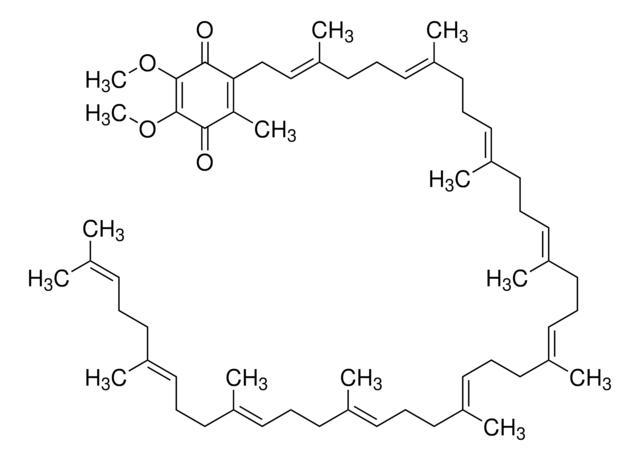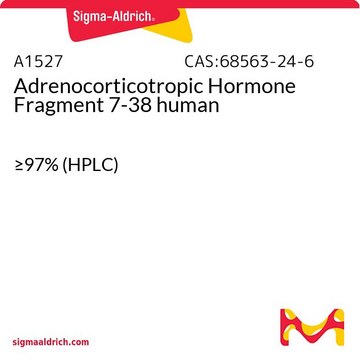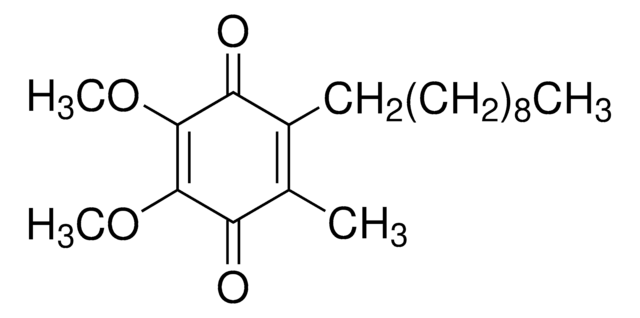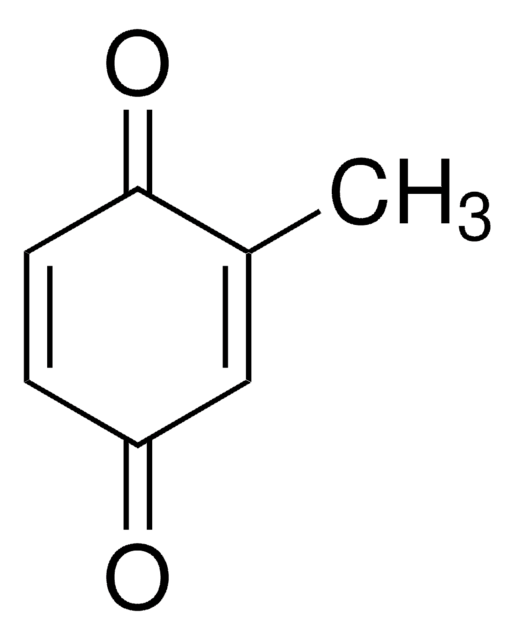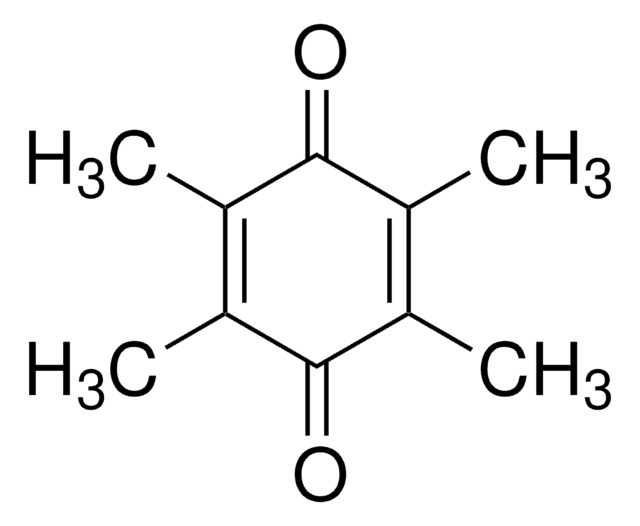C2470
Coenzyme Q4
≥90%
Synonym(s):
2,3-Dimethoxy-5-methyl-6-(geranylgeranyl)-1,4-benzoquinone, Q-4, Ubiquinone-20, Ubiquinone-4
About This Item
Recommended Products
Assay
≥90%
form
liquid
storage temp.
−20°C
SMILES string
COC1C(OC)C(=O)C(C\C=C(/C)CC\C=C(/C)CC\C=C(/C)CC\C=C(\C)C)=C(C)C1=O
InChI
1S/C29H44O4/c1-20(2)12-9-13-21(3)14-10-15-22(4)16-11-17-23(5)18-19-25-24(6)26(30)28(32-7)29(33-8)27(25)31/h12,14,16,18,28-29H,9-11,13,15,17,19H2,1-8H3/b21-14+,22-16+,23-18+
InChI key
MDLQEORKYVBTDV-INVBOZNNSA-N
Looking for similar products? Visit Product Comparison Guide
Application
Biochem/physiol Actions
Storage Class Code
10 - Combustible liquids
WGK
WGK 3
Flash Point(F)
Not applicable
Flash Point(C)
Not applicable
Personal Protective Equipment
Choose from one of the most recent versions:
Already Own This Product?
Find documentation for the products that you have recently purchased in the Document Library.
Customers Also Viewed
Articles
Learn about the four membrane-bound protein complexes that make up the electron transport chain metabolic pathway supplying energy as ATP for cellular respiration.
Our team of scientists has experience in all areas of research including Life Science, Material Science, Chemical Synthesis, Chromatography, Analytical and many others.
Contact Technical Service